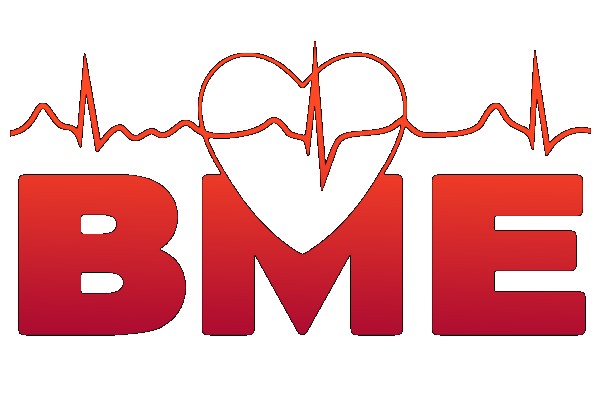I. INFUSION TECHNOLOGY
1. Historical aspects of infusion therapy and the origins of instrument infusion therapy. Terminology and nomenclature, incl. definition
other medical devices that are associated with the clinical application of these technical devices. Basic
principles and construction of the peristaltic pump, its properties and its use in clinical practice.
2. Clarification of occlusal pressure, calculation of pump performance, basic advantages of this principle. Influence of operating
parameters for therapy efficacy, set properties, change of parameters over time and stability of therapy parameters. Linearization
peristaltic pumps for the implementation of a lamellar or sequential type infusion pump, design and basic
Properties.
3. Derived pump technology - enteral pumps and their design. Linear Dispensers - Use of Injection
syringes, basic properties. Safety elements of infusion technology and their meaning. Possible negative effects of infusion
techniques (foreign objects, drug compatibility, air embolism, etc.)
4. Use of disposable medical devices necessary for the functioning of the infusion technique, their meaning, influence
on the quality and effectiveness of therapy.
5. Other pumping techniques for medical applications (concentrate diaphragm pumps, ultrafiltration pumps,
toothed flow and degassing pumps, etc.).
6. Infusion technology systems.
II. HEMODIALIZATION TECHNOLOGY
1. Historical aspects of hemodialysis treatment. Basic biophysical principles of hemodialysis treatment (diffusion, convection,
ultrafiltration, osmosis, etc.).
2. Permeable membranes, principle and design of the dialyzer, its properties, basic parameters and their
importance. Elimination of metabolic toxins, plasma water ultrafiltration, haemofiltration methods, material and technological
biocompatibility, etc.
3. Extra-blood circulation, its essential elements (dialyzer, needles, sets, etc.), influence on the efficacy and safety of the treatment,
parameters of circulation, preparation for clinical application, recirculation, drug inputs.
4. Treatment of water for dialysis treatment based on reverse osmosis and its importance. The issue of dialysis concentrates,
dialysis solution and quality assessment (monitoring).
5. Microbial safety of dialysis therapy, problems of cleaning and disinfection of dialysis equipment.
6. Adequacy of hemodialysis therapy, on line principles of adequacy monitoring. The safety of hemodialysis treatment.
Ecological aspects of dialysis treatment.
1. Historical aspects of infusion therapy and the origins of instrument infusion therapy. Terminology and nomenclature, incl. definition
other medical devices that are associated with the clinical application of these technical devices. Basic
principles and construction of the peristaltic pump, its properties and its use in clinical practice.
2. Clarification of occlusal pressure, calculation of pump performance, basic advantages of this principle. Influence of operating
parameters for therapy efficacy, set properties, change of parameters over time and stability of therapy parameters. Linearization
peristaltic pumps for the implementation of a lamellar or sequential type infusion pump, design and basic
Properties.
3. Derived pump technology - enteral pumps and their design. Linear Dispensers - Use of Injection
syringes, basic properties. Safety elements of infusion technology and their meaning. Possible negative effects of infusion
techniques (foreign objects, drug compatibility, air embolism, etc.)
4. Use of disposable medical devices necessary for the functioning of the infusion technique, their meaning, influence
on the quality and effectiveness of therapy.
5. Other pumping techniques for medical applications (concentrate diaphragm pumps, ultrafiltration pumps,
toothed flow and degassing pumps, etc.).
6. Infusion technology systems.
II. HEMODIALIZATION TECHNOLOGY
1. Historical aspects of hemodialysis treatment. Basic biophysical principles of hemodialysis treatment (diffusion, convection,
ultrafiltration, osmosis, etc.).
2. Permeable membranes, principle and design of the dialyzer, its properties, basic parameters and their
importance. Elimination of metabolic toxins, plasma water ultrafiltration, haemofiltration methods, material and technological
biocompatibility, etc.
3. Extra-blood circulation, its essential elements (dialyzer, needles, sets, etc.), influence on the efficacy and safety of the treatment,
parameters of circulation, preparation for clinical application, recirculation, drug inputs.
4. Treatment of water for dialysis treatment based on reverse osmosis and its importance. The issue of dialysis concentrates,
dialysis solution and quality assessment (monitoring).
5. Microbial safety of dialysis therapy, problems of cleaning and disinfection of dialysis equipment.
6. Adequacy of hemodialysis therapy, on line principles of adequacy monitoring. The safety of hemodialysis treatment.
Ecological aspects of dialysis treatment.
